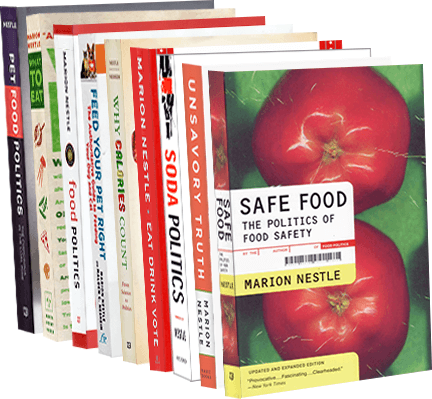My monthly (first Sunday) San Francisco Chronicle column deals with the quite astonishingly complex and consumer unfriendly rules for labeling alcohol beverages, in answer to this question:
Q: I like to read nutritional information on the foods and beverages I consume. Why is there no such information on alcoholic beverages?
A: You want to know the alcohol, calories and ingredients in your wine, beer and liquor? Good luck.
Some alcohol drinks label some of this, but so inconsistently that it’s hard to make sense of it. The alcohol beverage industry prefers that you not think about what’s in their products. And Congress does not want alcohol marketed as nutritious.
Remember Prohibition? This was the era from 1920 to 1933 when alcohol could not be made, transported or sold in America. When it ended, Congress passed the Alcohol Administration Act of 1935, still in force. Recognizing the tax potential of alcohol beverages, Congress assigned their regulation to the Treasury Department. Treasury’s Alcohol and Tobacco Tax and Trade Bureau (TTB) sets rules for alcohol labels.
Absurd as it may seem, the labeling rules differ for wine, beer and distilled spirits. Substances to which people might be sensitive, such as sulfites and yellow No. 5, must be labeled, but TTB considers “ingredients” only to mean carbohydrate, protein and fat. If a label states calories, it must also state those ingredients, even though wine and hard liquor hardly have any (beer has some carbohydrate).
Listing other ingredients is voluntary and some winemakers are placing ingredient lists on labels – mostly grapes, but sometimes oak products.
Concentrate hard on what comes next. Labels of distilled spirits must state percent alcohol. They may list calories (but usually don’t). Wine label rules depend on percent alcohol. Wines containing 14 percent alcohol or more must display alcohol content; they may list calories (but don’t).
Wines from 7 to 14 percent must list alcohol and may list calories, unless they are labeled “light” or “table,” in which case they do not have to list either.
And get this: Wines with less than 7 percent alcohol are regulated by the Food and Drug Administration, not TTB. They must display Nutrition Facts labels with calories, nutrients and actual ingredients. They may disclose percent alcohol, and some do.
The 1935 act prohibited beer labels from disclosing alcohol content, lest manufacturers compete to sell “stronger” products, but the ban was successfully challenged in court.
Now beer labels may state percent alcohol, and when it helps sales, they do. The “energy-booster” beers associated with college drinking freely display alcohol content. Their labels also boast of caffeine, ginseng and taurine, ingredients regulated by the FDA as food additives.
Calories on beer labels are equally inconsistent. Regular beer may state calories. Light beer must do so.
I’m not done yet. If a beer is made from a grain other than malted barley, it is FDA-regulated. It must display Nutrition Facts; it may display alcohol.
Strangest of all, regulations differ from one state to another and state rules sometimes can supersede those of TTB, but not those of FDA.
Let’s credit the advocacy group Center for Science in the Public Interest with trying to fix this absurd, consumer-unfriendly situation. For decades, CSPI has petitioned Treasury to require disclosure of alcohol, calories and contents on alcohol labels.
In the early 2000s, CSPI and a coalition of 70 consumer and health groups petitioned TTB to require Alcohol Facts labels listing those and other relevant details. The alcohol industry countered with a proposal for voluntary labeling. At the height of the low-carbohydrate diet craze, makers of distilled spirits were eager to market them as “no-carb.”
In 2004, TTB issued guidance to industry on how to voluntarily label products with a Serving Facts panel. In 2007, in response to public comment, TTB finally proposed mandatory labeling rules for alcohol beverages. These called for a Serving Facts panel listing alcohol, calories, carbohydrate, protein and fat in all beverages under TTB jurisdiction.
But lest these requirements appear too onerous, TTB agreed to allow companies to leave percent alcohol off the Serving Facts panel, as long as it appeared someplace else on the label. In response, CSPI insisted that TTB delete the unnecessary fat and protein listings, include alcohol on the panel and list all actual ingredients, along with a warning statement about excess alcohol consumption.
To date, TTB has neither responded to CSPI nor issued final rules. Its proposals apparently got caught in election cycles and remain in limbo. CSPI, in cutting budgets, closed its alcohol policy center last year.
What to do? If you want to know calories, you mostly have to guess. Standard servings of wine (5 ounces), regular beer (12 ounces) and spirits (1.5 ounces) each provide about 100 alcohol calories. Carbohydrates add 20 or more to wine, and 50 or so to beer. Yes, those calories count, and more and larger drinks have more calories.
For unlabeled alcohol, sweeteners and other food additives, you just have to hope for the best. Or you can write your congressional representatives to get TTB moving on alcohol labeling.
This article appeared on page K – 4 of the San Francisco Chronicle

